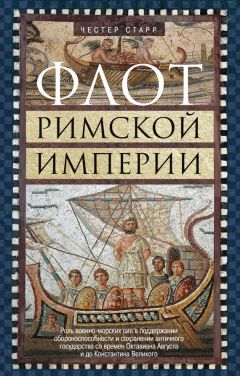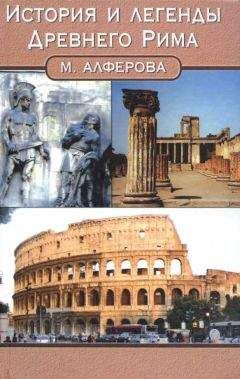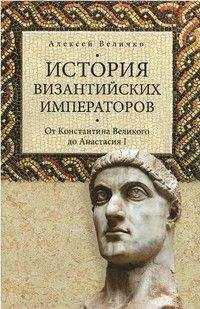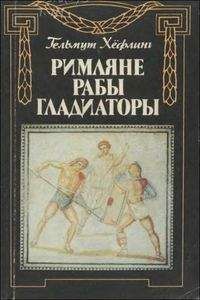Роберт Напп - Скрытая жизнь Древнего Рима. Рабы и гладиаторы, преступники и проститутки, плебеи и легионеры… Жители Вечного города, о которых забыла история
Наиболее полное исследование, посвященное теме вольноотпущенников и отношения к ним элиты, представляет работа A. M. Duff, Freedmen in the Early Roman Empire (Oxford: Oxford University Press, 1928); более краткий обзор представлен в: Jean Andreau, ‘The Freedman’, в: The Romans, ред. Andrea Giardina, пер. L. G. Cochrane (Chicago: University of Chicago Press, 1993). C. 175–198. Исследование Sandra Joshel’s Work, Identity, and Legal Status at Rome: A Study of the Occupational Inscriptions (Norman, OK: University of Oklahoma Press, 1992) полностью опровергает традиционную оценку взглядов аристократии на рабство, как и H. Mouritsen’s ‘Freedmen and Decurions: Epitaphs and Social History in Imperial Italy’, Journal of Roman Studies 95 (2005). C. 38–63, см. его: The Freedman in the Roman World (Cambridge, UK: Cambridge University Press, 2011), а также: Sinclair Bell, Teresa Ramsby (ред.), Free at Last!: The Impact of Freed Slaves on the Roman Empire (London: Bristol Classical Press, 2012). Относительно императорских вольноотпущенников см.: Paul Weaver, Familia Caesaris: A Study of the Emperor’s Freedmen and Slaves (Cambridge, UK: Cambridge University Press, 1972). По теме демографии Римской империи имеются солидные труды W. Scheidel и эссе Peter Garnsey, особенно ценна работа ‘Independent Freedmen and the Economy of Roman Italy under the Principate’, Klio 63 (1981). C. 359–371. Об искусстве вольноотпущенников см.: Lauren Hackworth Petersen’s The Freedman in Roman Art and Art History (Cambridge, UK: Cambridge University Press, 2006). Сравнительные материалы из Бразилии см.: Mary C. Karasch, Slave Life in Rio de Janeiro, 1808–1850 (Princeton: Princeton University Press, 1987).
Глава 6. Жизнь в армии: солдатыЗдесь уместно будет воздать должное Ramsay MacMullen, который в 1963 г. своим объемным трудом Soldier and Civilian in the Later Roman Empire (Cambridge, MA: Harvard University Press) заставил увидеть в солдатах людей, роль которых в обществе и армии достойна серьезного изучения. Замечательными работами, рассматривающими простых солдат как реальных людей, являются: J. M. Carrié, ‘The Soldier’, в: The Romans, ред. Andrea Giardina, пер. L. G. Cochrane (Chicago: University of Chicago Press, 1993). C. 100–137 B. A. Campbell, War and Society in Imperial Rome 31 BC – AD 284 (London: Routledge, 2002). C. 25–46, 77—105. R. Alston’s Soldier and Society in Roman Egypt: A Social History (London: Routledge, 1995) содержит большое количество интересных сведений из Египта, позволяющих их широкое использование; Sara Elise Phang’s Roman Military Service: Ideologies of Discipline in the Late Republic and Early Principate (New York: Cambridge University Press, 2008) приводит богатый набор сведений. Основные источники скомпонованы и переведены в: B. A. Campbell, The Roman Army, 31 BC – AD 337: A Sourcebook (London: Routledge, 1994). О демографии см.: Walter Scheidel, ‘Marriage, Families, and Survival’, в: The Blackwell Companion to the Roman Army, ред. Paul Erdkamp (Oxford: Blackwell, 2007). C. 417–434; дополнительные исследования вопросов, связанных с браком, семейной жизнью и сексом, см.: Sara Elise Phang, The Marriage of Roman Soldiers (13 BC – AD 235): Law and Family in the Imperial Army, Columbia Studies in the Classical Tradition 24 (Leiden: Brill, 2001).
Глава 7. Секс за деньги: проституцияНаиболее быстрый и полный доступ к подробным материалам о проституции в греко-римском мире – в нескольких эссе: Thomas A. McGinn: Prostitution, Sexuality, and the Law in Ancient Rome (Oxford: Oxford University Press, 1998); The Economy of Prostitution in the Roman Empire (Ann Arbor: University of Michigan Press, 2004); и в подготовленной к выпуску Roman Prostitution. Такой же основательной работой является Rebecca Fleming’s ‘Quae corpore quaestum facit [‘She who makes money from her body’]: The Sexual Economy of Female Prostitution in the Roman Empire’, Journal of Roman Studies 89 (1999). C. 38–61. Более обобщенное представление о классическом мире дано в небольших эссе: Jane F. Gardner, Women in Roman Law and Society (Bloomington: Indiana University Press, 1986) и Sarah B. Pomeroy, Goddesses, Whores, Wives, and Slaves: Women in Classical Antiquity (New York: Schocken, 1975). Подтверждение, что в Римской империи не было такого явления, как храмовая проституция, см.: Stephanie Budin, The Myth of Sacred Prostitution in Antiquity (Cambridge, UK: Cambridge University Press, 2008). John R. Clarke мастерски использует сведения об искусстве в изучении отношения римлян к сексу; из его работ самые важные: Looking at Lovemaking: Constructions of Sexuality in Roman Art 100 BC – AD 250 (Berkeley: University of California Press, 1998); Looking at Laughter: Humor, Power, and Transgression in Roman Visual Culture, 100 BC – AD 250 (Berkeley: University of California Press, 2007) и Art in the Lives of Ordinary Romans: Visual Representation and the Non-Elite Viewers in Italy, 100 BC – AD 315 (Berkeley: University of California Press, 2003); его выдающимся эссе является Roman Sex (New York: Harry N. Abrams, 2003). О медицинской стороне вопроса см.: Mirko D. Grmek, Diseases in the Ancient Greek World, пер. Mireille Muellner and Leonard Muellner (Baltimore: Johns Hopkins University Press, 1989). C. 132–151; о контрацепции и абортах см.: Plinio Prioreschi, ‘Contraception and Abortion in the Greco-Roman World’, Vesalius 1 (1995). C. 77–87. Приведенные мною египетские материалы взяты из: Women and Society in Greek and Roman Egypt: A Sourcebook, ред. Jane Rowlandson (Cambridge, UK: Cambridge University Press, 1998).
Глава 8. Слава и смерть: гладиаторыНедостатка в материалах о гладиаторах никогда не было. Все недавние исследования основаны на двух французских работах середины XX в., в которых собрано большинство фундаментальных документов: Louis Robert, Les gladiateurs dans l’Orient grec (Bibliothèque de l’Ecole des Hautes Études, Ive section, Sciences historiques et philologiques fasc. 278, Paris: Champion, 1940) и George Ville, La gladiature en occident des origines à la mort de Domitien (Rome: École Française de Rome, 1981 (большая часть которой написана еще в 1967 г.). Лучшие работы за последние 20 лет: Thomas Wiedemann, Emperors and Gladiators (London: Routledge, 1992); D. S. Potter и D. J. Mattingly, Life, Death, and Entertainment in the Roman Empire (Ann Arbor: University of Michigan Press, 1999); Alison Futrell, Blood in the Arena: The Spectacle of Roman Power (Austin: University of Texas Press, 1997); Donald G. Kyle, Spectacles of Death in Ancient Rome (London: Routledge, 1998) и снова Alison Futrell, The Roman Games: A Sourcebook, Blackwell Sourcebooks in Ancient History (Oxford: Blackwell, 2005). Для тех, кому интересно узнать о культурном значении арены и ее артистов, эти книги предоставляют полезную библиографию.
Из множества статей о гладиаторах чаще всего используются: Valerie Hope, ‘Negotiating Identity and Status: The Gladiators of Roman Nîmes’, в: Cultural Identity in the Roman Empire, ред. J. Berry и R. Laurence (London: Routledge, 1998). C. 179–195 и ‘Fighting for Identity: The Funerary Commemoration of Italian Gladiators’, в: The Epigraphic Landscape of Roman Italy, Bulletin of the Institute of Classical Studies Supplement 73 (2000), ред. A. E. Cooley. C. 93—113. О женщинах-гладиаторах фундаментальным трудом является: Dominique Briquel’s ‘Les femmes gladiateurs: examen du dossier’, Ktema 17 (1992). C. 47–53, тогда как краткий английский обзор материала дается в: A. McCullough, ‘Female Gladiators in Imperial Rome: Literary Context and Historical Fact’, Classical World 101 (2008). C. 197–209.
Глава 9. Вне закона: разбойники и пиратыЗамечательными и довольно краткими введениями в мир разбойников являются: Brent Shawn, ‘The Bandit’, в: The Romans, ред. Andrea Giardina, пер. L. G. Cochrane (Chicago: Chicago University Press, 1993). C. 300–341, и его же: ‘Outlaws, Aliens and Outcasts’, в: The Cambridge Ancient History, 2-е изд., Т. 11, ред. A. K. Bowman и др. (Cambridge, UK: Cambridge University Press, 2000). C. 382–405. В работе Werner Riess’s Apuleius und die Räu-ber: Ein Beitrag zur historischen Kriminalitätsforschung (Stuttgart: Heidelberger Althistorische Beiträge und Epigraphische Studien 35, 2001) приведены убедительные аргументы, позволяющие использовать роман Апулея для представления о реальных разбойниках в греко-римской истории; его ‘Between Fiction and Reality: Robbers in Apuleius’ Golden Ass’, Ancient Narrative 1 (2000–2001). C. 260–282, представляет собой изложение на английском основных доводов. Thomas Grünewald’s Bandits in the Roman Empire: Myth and Reality (London, New York: Routledge, 1999) возражает предыдущему автору и доказывает, что античная литература дает только «миф». О пиратстве см.: P. de Souza’s Piracy in the Graeco-Roman World (Cambridge UK: Cambridge University Press, 1999). Для более художественного представления о пиратах см.: Nicholas K. Rauh, Merchants, Sailors and Pirates in the Roman World (Charleston, SC: Tempest Publishing, 2003). Необычный взгляд на преступников как на общественный феномен изложен в: Ramsay MacMullen, Enemies of the Roman Order (Cambridge, MA: Harvard University Press, 1967); сравнительные сведения о разбойниках см.: Eric Hobsbawm, The Bandit (New York: Delacourt Press, 1969) и о пиратах: Marcus Rediker, Between the Devil and the Deep Blue Sea: Merchant Seamen, Pirates and the Anglo-American Maritime World, 1700–1750 (Cambridge, UK: Cambridge University Press, 1989), гл. 6: ‘The Seaman as Pirate: Plunder and Social Banditry at Sea’. C. 254–287. Романы можно прочитать в: Collected Ancient Greek Novels, ред. B. P. Reardon и др. (Berkeley: University of California Press, 1989).
ИсточникиО Лукиане см.: C. P. Jones, Culture and Society in Lucian (Cambridge, MA: Harvard University Press, 1986); о крестьянском питании: William Fitzgerald, ‘Labor and Laborer in Latin Poetry: The Case of the Moretum’, Arethusa 29 (1996). C. 389–418; об Апулее: F. Millar, ‘The World of The Golden Ass’, Journal of Roman Studies 71 (1981). C. 63–75 и William Fitzgerald, Slavery and the Roman Literary Imagination (Cambridge, UK: Cambridge University Press, 2000); об Эзопе: Keith Hopkins, ‘Novel Evidence for Roman Slavery’, Past and Present 138 (1993). C. 3—27; о Петронии: John H. D’Arms, Commerce and Social Standing in Ancient Rome (Cambridge, MA: Harvard University Press, 1981); о юридических материалах: J. A. Crook, Law and Life of Rome (London: Thames & Hudson, 1967); O. F. Robinson, The Sources of Roman Law (London: Routledge, 1997); о народной нравственности: Teresa Morgan’s excellent Popular Morality in the Early Roman Empire (Oxford: Oxford University Press, 2007); об Артемидоре: The Interpretation of Dreams: Oneirocritica by Artemidorus, пер. и комментарии Robert J. White (Park Ridge, NJ: Noyes Press, 1975); о Дорофее Сидонском: Carmen Astrologicum, пер. David Pingree (Munich: K. G. Saur, 1976); о магических папирусах: H. D. Betz и др., The Greek Magical Papyri in Translation: Including the Demotic Texts (Chicago: University of Chicago Press, 1986).
О Новом Завете: A. N. Sherwin-White, Roman Society and Roman Law in the New Testament (Oxford: Oxford University Press, 1963), об антропологических и социальных взглядах: P. F. Esler, The First Christians and Their Social Worlds (London: Routledge, 1994); об эпиграфике: Epigraphic Evidence: Ancient History from Inscriptions, ред. J. Bodel (London: Routledge, 2001) и Maureen Carroll’s Spirits of the Dead: Roman Funerary Commemoration in Western Europe (Oxford: Clarendon Press, 2006); об использовании папирусов: Roger Bagnall, Reading Papyri, Writing Ancient History (London: Routledge, 1995); о снах: Arthur Pomeroy, ‘Status and Status-Concern in the Greco-Roman Dream Books’, Ancient Society 22 (1991). C. 51–74; об использовании объектов искусства: T. Hölscher, The Language of Images in Roman Art (Cambridge, UK: Cambridge University Press, 2004 (orig. German, 1987) и John R. Clarke, Art in the Lives of Ordinary Romans: Visual Representation and Non-Elite Viewers in Italy, 100 BC – AD 315 (Berkeley, Los Angeles: University of California Press, 2003).




